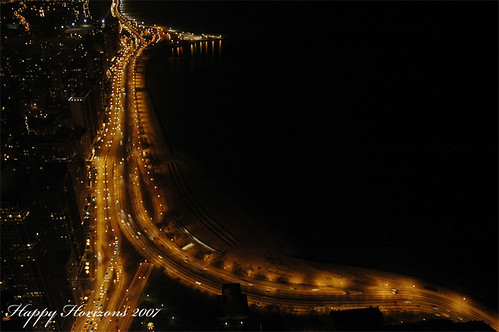The following talk is by a Scientific Photographer,
Felice Frankel's Envisioning Science: The Design and Craft of the Science Image who on a grant from the National Science Foundation, did a book that the slides are now made up of.
Its a long talk, but quite interesting. I was glued to it!
This was a part of a talk that we saw for my Info Viz class here. I love it when she ends the talk on :
"Picture Making should be a part of the Vocabulary." Think about it!
Also today, I was doing an exercise on how we can use photographs to show valuable information.

I would like to showcase is this photograph of the Chicago city along the Lake Michigan. The roads that are more lit have more traffic over it. All portions of the photograph have been exposed for the same time. Thus the more conglomeration of spots on the left indicate the high traffic zone. There is an area on the right, which is completely dark. This indicates the absence of any people / traffic there hence showing an uninhabited land. The left portion of the image, where there is more light spots show the areas where there is inhabitation. This kind of visualization would be extremely helpful for flights, which are crossing the area. An indication of a water body is further enhanced by the reflection along the pier.
Similarly thinking of photography as a tool to represent data can be exciting. What we see in the talk is the use in the case of a scientific context, however I feel the same can be applied to other fields. Some of the fields that i find this being applicable is the street photography (showing patterns in crowd movements, traffic snarls, busy locations) and then in nature photography (showing the patterns in nature).
A pretty exciting field when I think about it this way.

2 comments:
interesting thought... and a valid one for sure !!!
Agree to you Prashant!
Post a Comment